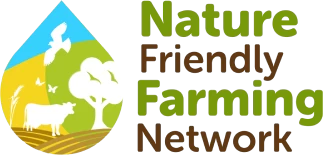The profit squeeze
Over recent years, Covid-19, the war in Ukraine and Brexit-related labour shortages have exposed the fragilities of the food system. Farmers facing impossibly tight profit margins are feeling the added financial pressure of sky-high inflation in energy and fuel costs while navigating increasingly unpredictable and extreme weather events.
Many farmers have responded to these pressures by adopting strategies to increase farm output, but have found insufficient financial return on their investment. The new report published today details the high costs of this ‘high input, high output’ system and shows how the economics of nature-friendly farming stack up as a viable alternative business model.
The sweet spot
Farming at the sweet spot, published by the Nature Friendly Farming Network and The Wildlife Trusts, presents robust analysis of a ‘sweet spot’ called the Maximum Sustainable Output (MSO) which benchmarks improvements to commercial returns by assessing a farm’s revenue, variable, and fixed costs.
If farming at the level of MSO, the study finds that the staged reduction of costly inputs, such as artificial fertiliser, pesticides, and imported feed concentrate, makes farmers significantly better off across all farm systems studied.
The predicted commercial returns, before farm support payments, sees an average increase of 10% – 45%. By farm sector, the commercial return is 45.3% for lowland livestock, 39.1% for upland livestock, 32.7% for dairy systems, and 9.5% for lowland arable farms.
If farm output is underpinned by recovering natural on-farm assets, such as soil health and grass yield, it strengthens farm business resilience, increases stability against external shocks and stressors, and reduces reliance on inputs.
The resulting environmental benefits of moving to MSO can also significantly improve farm ecosystem functions, such as pollination and soil health, improved water quality, and reductions in GHG emissions.
This approach to farming that works in harmony with nature would help put farmers in a position to take advantage of a new era of farm support that is increasingly focused on the provision of public goods through environmental delivery.


